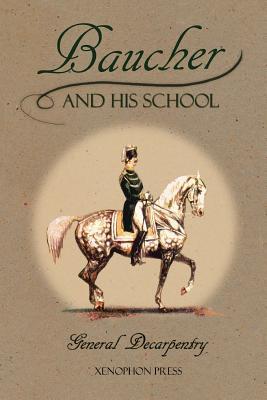Baucher and his School (originally published in 1948) is an original biography of the "greatest cuyer of all time," Franois Baucher (1796-1873). Albert Decarpentry comments on the discoveries of one of the most prolific innovators in Equestrian Art. This book comprises the equestrian biography of Franois Baucher, an analytical examination of his method, and its lasting effect on French equitation. Decarpentry's treatise is essential for understanding the importance of Baucher, a phenomenal figure in the history of equitation.
Appendix I contains excerpts from the memoir of Louis Rul, clarified and completed by his friend Eugene Caron. Their personal accounts provide valuable firsthand anecdotes of the life and times of Baucher.
Appendix II consists of excerpts from "Monsieur Baucher and his Art: Serious Warning to the Riders of Germany" by Louis Seeger, Baucher's German rival. Seeger (also the teacher of Gustav Steinbrecht, Gymnasium of the Horse) studied Baucher's method with malevolent blindness, but also with indisputable competence. With rigorous examination, Seeger compares and contrasts his own method to Baucher's "nouvelle methode." His counter-argument sheds light on the 'German' versus 'French' dressage method that has endured even today.
Franois Baucher's lasting influence on equitation is the evolution of his ideas to the concept of "riding in lightness." Baucher constantly questioned his own and the established methods, experimented and innovated through lifelong trial and error in search of the truth.
Commander of the Cavalry School at St. Cyr, Ecuyer and second in command of the Cadre Noir in Saumur, Albert Decarpentry, grandson of Eugene Caron and a student of Baucher, was considered the most knowledgeable cuyer of his generation. He contributed actively to the influence of French equitation in his many books and by writing the rules and definitions of the F.E.I. that are still used today. His account of Baucher's life is both informed and impartial.
